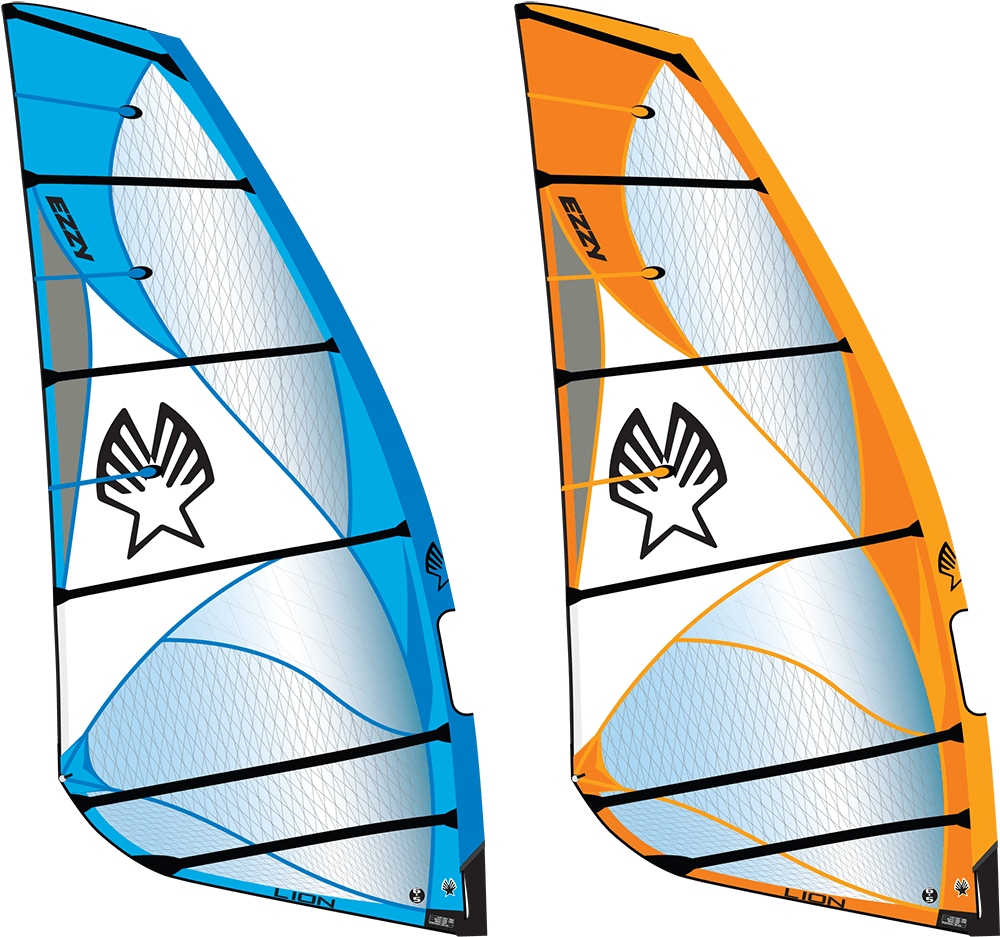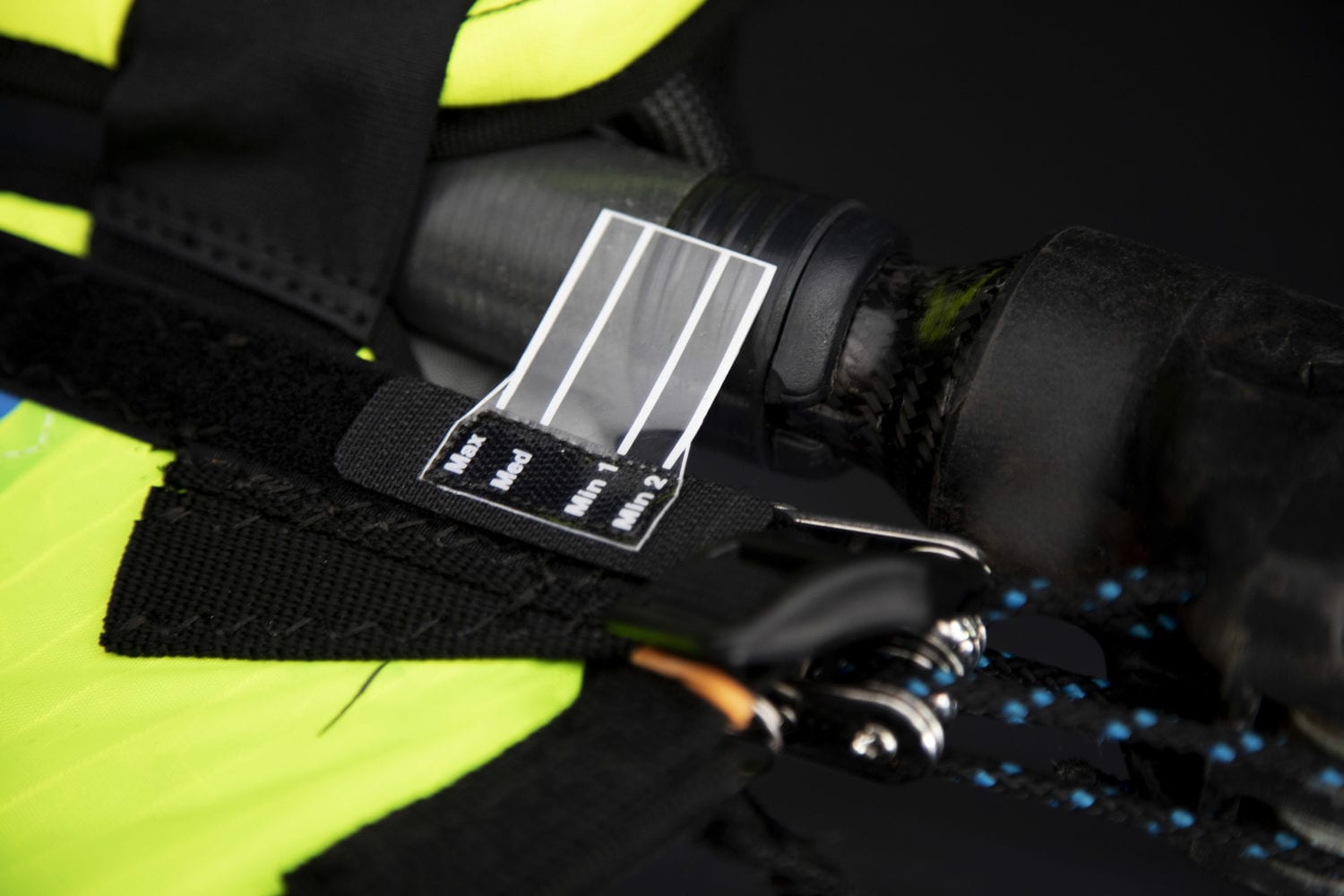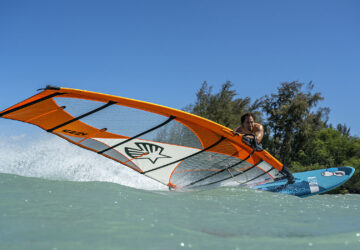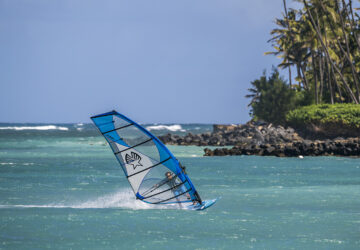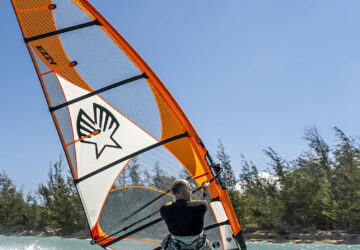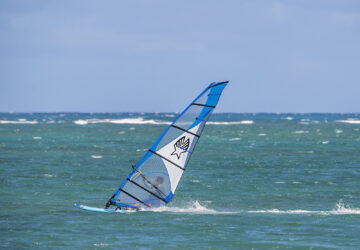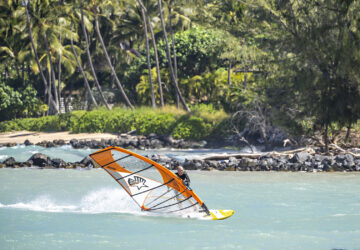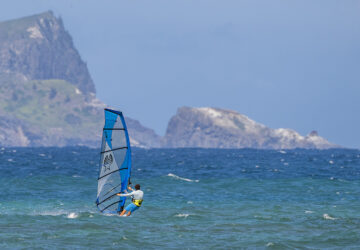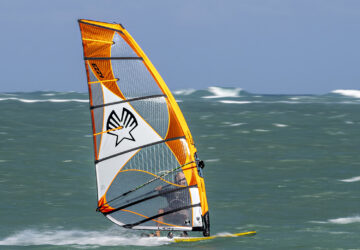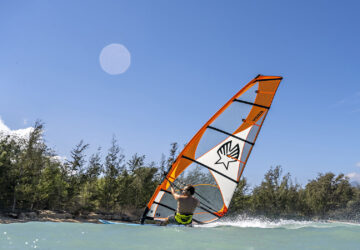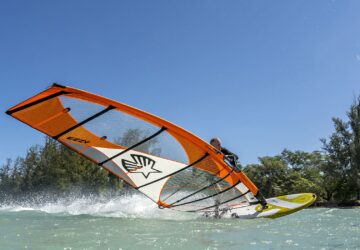Lion
TWIN-CAM FREERIDE
Are you an expert sailor looking for high performance, fast freeride?
Then the Lion is for you.
What makes the Lion special compared to other cambered sails?
Unlike many wide-sleeved, cambered sails on the market, the Lion's sleeve is narrow to make waterstarting and uphauling easy. Even with this narrow sleeve, the Lion will work with any mast: RDM, SDM, and everything in between. The Lion comes with cams for the Ezzy RDM masts already installed, and you will find extra cams included in the Lion's bag that will fit any mast made in the last 25 years.
Can you remove the cams on the Lion?
Yes, the Lion can be run as a two cam, single cam, or no-cam sail.
What's new about the 2022 Lion?
1) Faster, 2) More stable, and 3) Lighter.
What else is new?
Less shape below the boom reduces profile drag making the Lion more “slippery” through the air. A deeper profile above the boom gives earlier planing and stability. New scrim reinforcements reduce weight by not absorbing water.
What is the difference between the Lion and Cheetah?
Overall, the top speed of the Lion and Cheetah are similar. Stability is the main benefit of the cams. The extra stability comes with the trade-off that rigging the Lion requires more steps. In the jibes, the cams mean that the Lion keeps driving, allowing an expert windsurfer to transfer that power to the rail. Without cams, the Cheetah, on the other hand, is more neutral in the jibe, which makes it flip to the new side more easily.
Learn more below.
What do we mean when we talk about the Lion's quality construction?
Living and testing on Maui, we have learned how to make sails that survive the the elements. The Lion is a freeride sail, but it is built with the wisdom of over 35 years of making wave sails. There is no monofilm that will quickly crack and break. The Lion is made with lightweight and strong scrim, Dyneema, and Technora-reinforced sailcloth. We use RBS epoxy battens, the strongest battens in the world.
Every seam is glued and covered before being sewn. David Ezzy owns his own factory because no other factory can produce the quality he demands.
Every sail is rigged in the factory by our experienced craftsmen who scrutinize every milimeter from headcap to pulley. While rigged, the battens are tuned to be ready right out of the bag for your first session.
We obsess over quality so you can enjoy the Lion today and for many years to come.
How does the calibrated rigging save you time?
No one likes to spend time rigging. The Lion sets up in minutes with rigging gauges that remove all the guesswork from tuning. Just downhaul until the gauge lines up with the bottom of your mast. That’s it. No guessing. Markers on the clew further ensure accurate and precise rigging. Each and every sail is rigged and calibrated in the Ezzy Sails factory.
What do our testers say about the new Lion?
"The new Lion is significantly improved in my mind. It has an absolutely HUGE range (8.0 from 12 knots to 19 knots in one session). Significantly lighter than the old one, it also feels incredibly compact. So much so that I kept looking at the booms to see if I really had them at the length I thought and the clew was really that far out there! The rotation is even smoother than the old ones. The new Lion is so easy to sail and feels so light and compact that someone like me (who is usually a Cheetah no-cam guy) will want to use the Lion almost exclusively in the larger sizes. They are ridiculously fast in a straight line (30-31mph on a race board in choppy conditions) but have almost the same easy sailing feel of the Cheetah.
The old ones felt good but they were heavier and they felt true to size. The new Lion feels a size smaller (7.5 feels like a 6.5 etc) than the old ones. The top-end stability on these sails is really good. Even better than last year's. Stability is a gradual improvement I would say, but rotational smoothness, compactness and lightness are really noticeable. One other thing you can notice is the stability throughout the body of the sail. When the leech blows off in gusts you don’t feel like you lost the upper part of the sail to drag. You still feel like the whole sail, from top to bottom, is engaged and working.
The new Lion is a champ in light air. While their actual light wind range is only slightly improved they feel a lot better in that end of the wind spectrum because they are so compact feeling and significantly lighter in feel. As a result they are easier (and quicker) to pump and power up than the old ones.
The first thing you feel is amazement that you are on the size sail you are actually on! They are so compact that, as mentioned, you keep looking at the back end to see if someone lopped off a section of the boom because you just don’t feel like it's that long and the sail is that big. Then you get hit with the speed and power rush. Huge, stable power and the ability to drive a board to top speeds quickly and quietly. Easy to get all of it and keep it going. I have used Lions on full-on race boards and kept with or passed guys on full race sails and boards while having a much better time. This year’s is even easier to use and the jibe is almost like a no-cam sail. All the fun without the weight and hassle.
The Lion seems to have crossed a barrier to being so user friendly and light feeling it is my go-to sail in conditions where anything from a 6.5 up is called for." -Dan on Oahu
Is the Lion right for you?
If you want a high-performance, 2-cam freeride sail that is built strong, the Lion is right for you.
LION SAIL SPECS
| LION | Luff | Luff | Boom | Boom | No. of | Suggested Mast | Weight |
| Size (sq.m.) | Min (cm) | Max (cm) | Min (cm) | Max (cm) | Battens | Length / MCS / IMCS | Kilogram |
| 6.0 | 445 | 448 | 184 | 190 | 6 | 430 / 25 / 21 | 4.03 |
| 6.5 | 455 | 458 | 191 | 198 | 6 | 430 / 25 / 21 | 4.23 |
| 7.0 | 466 | 469 | 197 | 205 | 6 | 460 / 25 / 25 | 4.36 |
| 7.5 | 477 | 480 | 206 | 213 | 7 | 460 / 25 / 25 | 4.83 |
| 8.0 | 485 | 488 | 214 | 222 | 7 | 460 / 25 / 25 | 5.02 |
| 8.5 | 500 | 503 | 222 | 230 | 7 | 490 / 26 / 29 | 5.16 |
| 9.5 | 513 | 516 | 231 | 239 | 7 | 490 / 26 / 29 | 5.50 |
Note on Ezzy Masts
How To Choose The Perfect Mast Combination For Your Quiver:
- Pick the top and bottom that fits the sail you use the most.
- Use a longer top for your bigger sail.
- Use a shorter bottom for your smaller sail.
|
X
|
= Best Combination
|
= Good Combination
|
The Ezzy Hookipa Mast
Ezzy Sails work great with the Ezzy Mast system, but also work with a variety of other brand masts (RDM and regular diameter). You could contact your mast maker and see if the bend of your non-Ezzy mast is compliant.
Ezzy mast bend curves are tip: 75% to 79% and base: 62% to 65%
Note: this is not carbon content. This is percentage bend relative to the midpoint bend.

